The heart of the home: Designing timeless kitchens for modern needs
It’s where you cook. Where you eat. Where you talk, laugh and connect. It’s the heart of the home: your kitchen. So, how do you design one that’s perfect for you? We spoke to interior designer Bec Shnider about balancing form with function – and creating a kitchen that inspires.
Image by: Suzi Appel
Open space, open minds: Tips for creating a seamless kitchen flow
Efficiency and elegance go hand in hand when it comes to movement in the kitchen.
‘Every aspect of the kitchen’s layout impacts its functionality. That includes butlers’ pantries and laundry spaces,’ explains Bec. ‘Given the sheer amount of time we spend in the kitchen, it’s so important to consider how you move around the space.’
What works for one family may not work for another, so customising the floor plan to fit a client’s lifestyle is key. But there are some universal features that Bec relies on for success.
‘Consider placing the bin close to your main workspace and positioning the dishwasher near relevant drawers so that it’s easy to unload.
‘My big non-negotiable is ensuring the fridge is positioned at the end of the kitchen, away from the main workspaces, so that anyone can access it without causing congestion. Similarly, I always like to make sure a kitchen has two entry points so everyone can get in and out easily.’
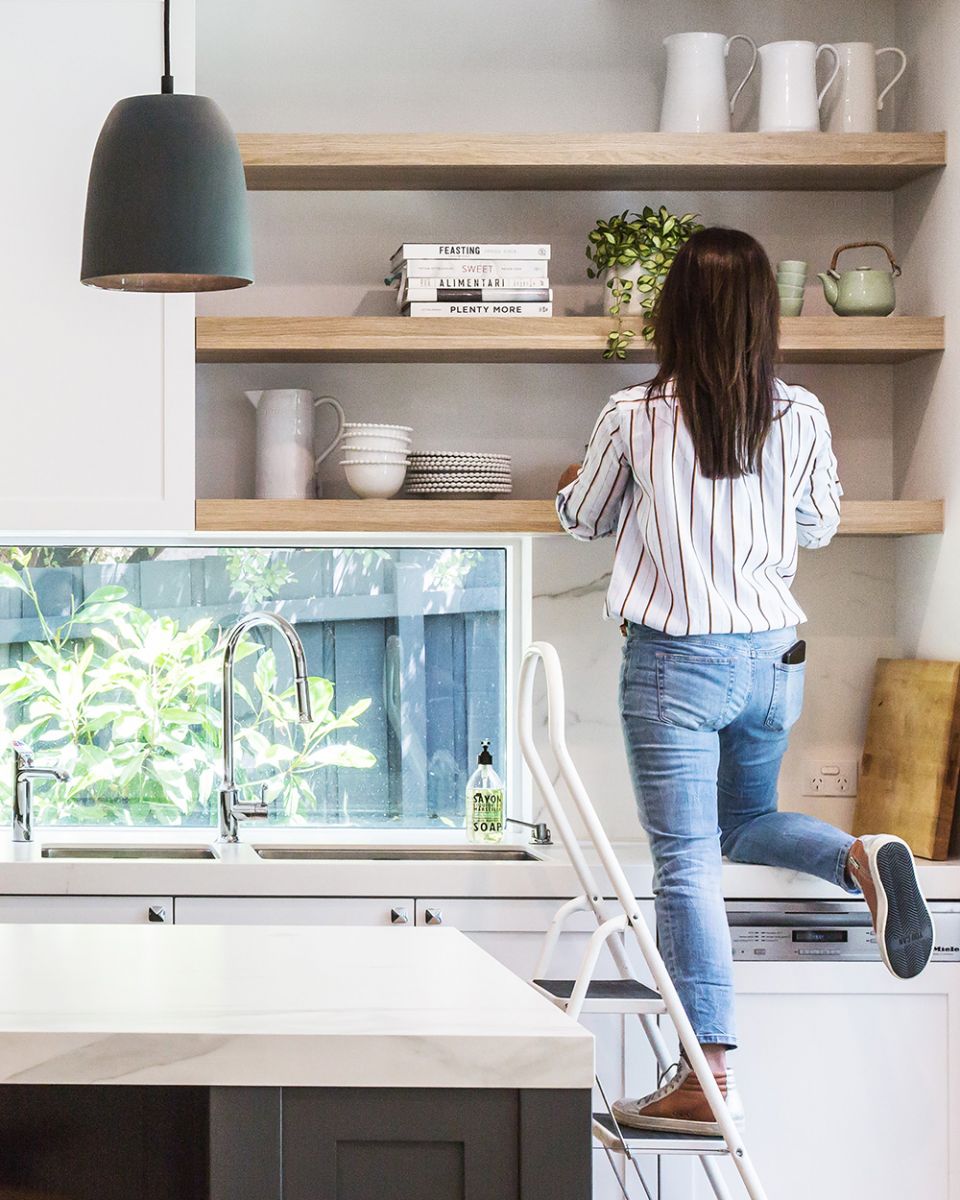
Image by: Suzi Appel
Designing for gatherings: Kitchens to welcome guests
Since COVID, we’ve seen a trend of more people entertaining at home – which has significantly influenced kitchen designs.
‘I see a lot more people incorporating bars or coffee stations into their kitchen cabinetry to allow them to entertain straight from their kitchen without moving to another room,’ Bec shares.
And kitchens don’t need to be confined to the great indoors, either. Bec often creates entertaining spaces outside, ensuring a seamless flow from the kitchen into the outdoor area.
‘Some people have an entire kitchen outside joining onto a BBQ area. They might have a bar, a fridge, a dishwasher and some cabinetry. Another really nice touch is an open serving window from the kitchen to the BBQ area,’ she says.
‘But when you’re designing these dual spaces, it’s essential to consider things like how far away the external amenities are from the internal kitchen and how you want the space to flow.’
And when you do it right?
‘It’s harmonious and functional – perfect for hosting a night in with friends!’
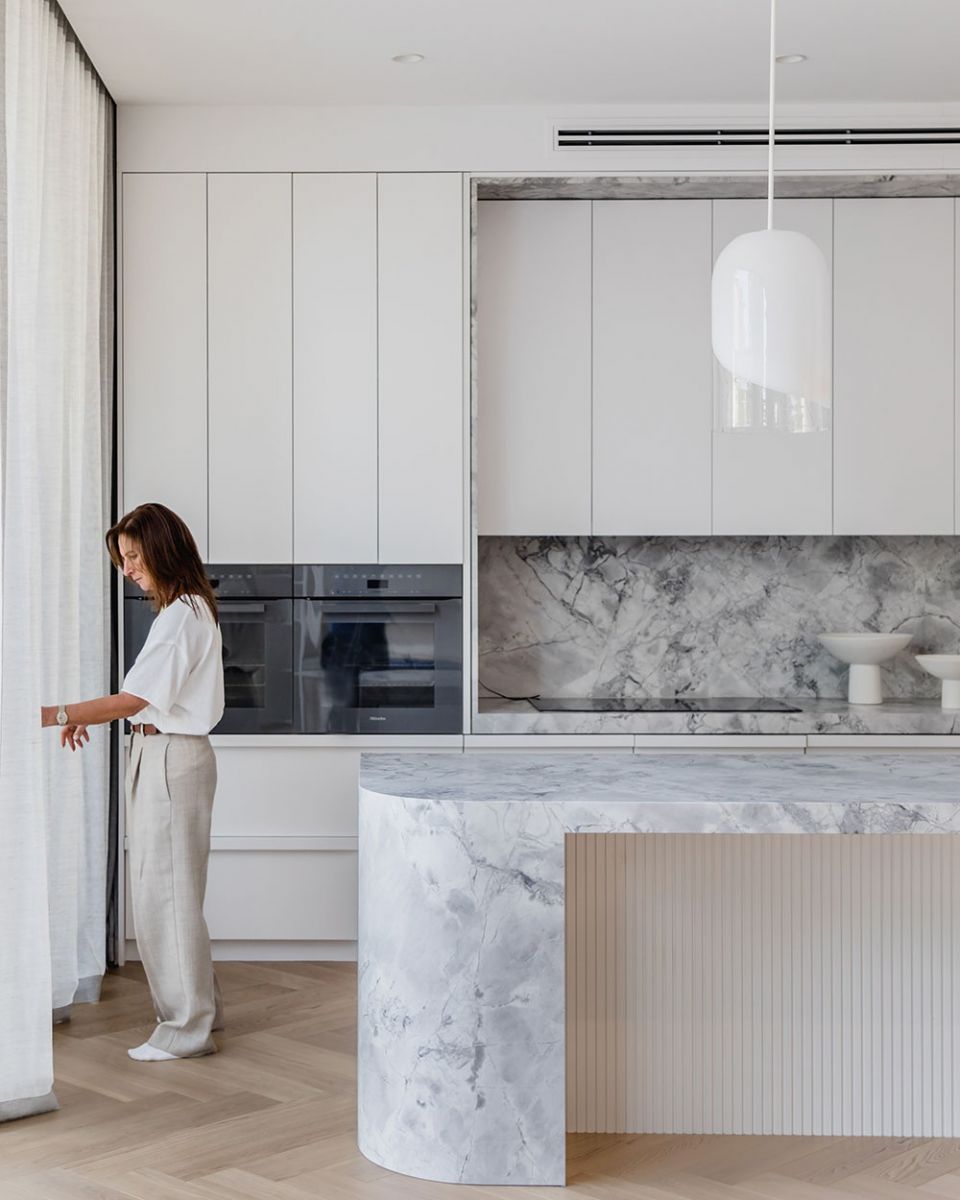
Image by: Suzi Appel
When old meets new: Integrating modern kitchens into classic homes
Integrating modern kitchens into classic homes can be a delicate balancing act. But when done right, it creates a stunning blend of old and new.
‘It can be incredible to have a beautiful period home with an ultra-modern extension at the back,’ Bec notes. ‘But to pull that off, you need to maintain continuity through some of the home’s features.’
The best way to ensure this continuity? Using the same flooring from the front to the back of the house.
Bec also advises keeping period features like skirting boards, architraves and ceiling roses at the front of the house with a fresh coat of paint – while opting for a more contemporary style in the rear extension.
‘This way, you preserve the home's character at the front, but the back has a modern feel,’ Bec explains. ‘It's all about creating a seamless transition through the house. Otherwise, it just doesn’t flow or feel harmonious.’
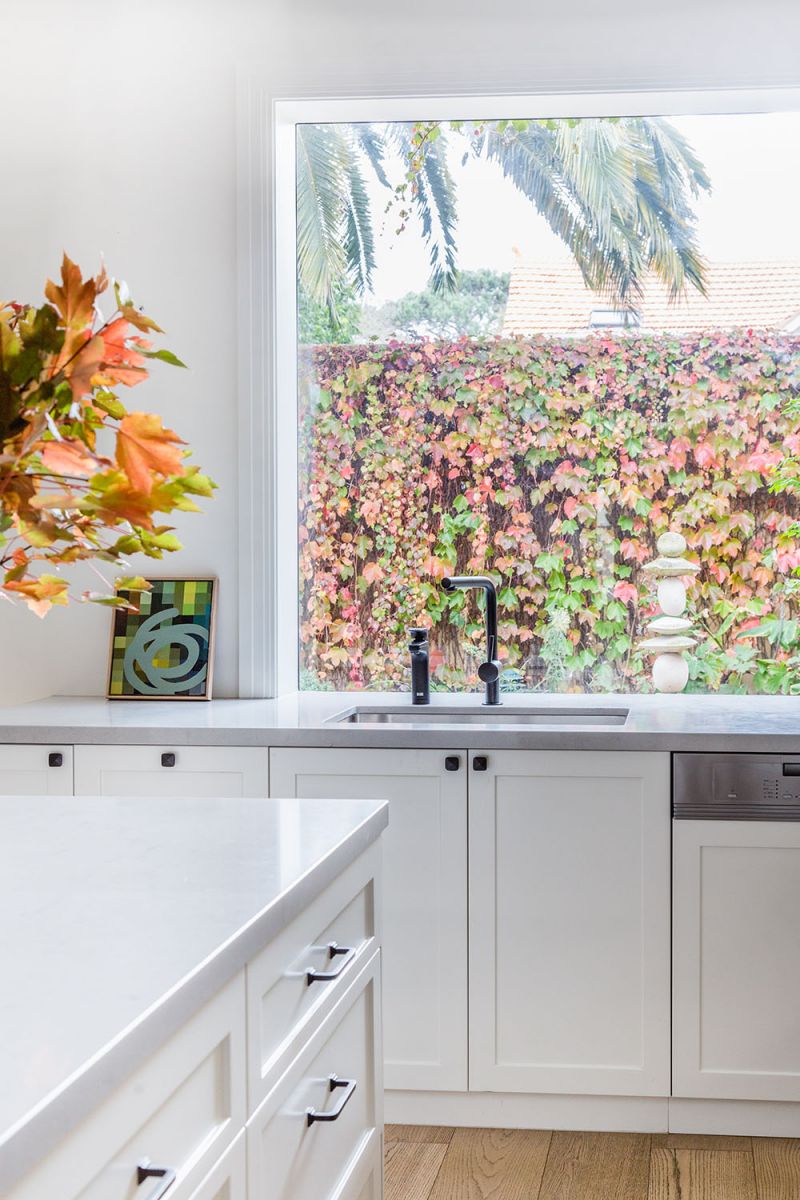
Image by: Suzi Appel
On-trend: Popular shapes, sizes and materials
In today’s kitchen scene, warmth and natural elements are taking the spotlight.
Natural materials like stone and timber remain popular for their timeless appeal. But textured stones are gaining traction for benchtops, offering depth in their design – without the veining.
‘It’s been interesting to see some of the new re-constituted stones available in textured finishes and natural earthy colours,’ Bec enthuses.
‘Handles and profiles on cabinetry are also making a comeback, which is an element of the old ‘Shaker’ style that gives a design that elegant touch.’
As for colour, Bec says that bold is in. ‘I’m seeing a burst of greens, blues, burgundies, browns and golds.’
Curves are also making a statement, especially on kitchen islands and display cabinetry.
And when it comes to lighting, ambience is key.
‘Nobody wants harsh LED lighting. It’s all about setting the mood and creating an ambience with task and pendant lights. No one wants to feel like they’ve walked into a convenience store!’ Bec laughs.
.jpg)
Image by: Suzi Appel
The finer points: Small details that elevate a kitchen design
When it comes to all the labours of love you put into your kitchen, it’s the small details that truly make or break the space.
‘When you’re already investing in a kitchen redesign, every detail matters,’ emphasises Bec. ‘From dividers in utensil drawers to specific compartments for bulk-bought supplies like cling wrap and foil, thoughtful organisation ensures everything has its place.’
Subtle design touches, such as vertical panelling, add depth and character to the space. While innovative features like power points inside drawers enhance functionality – without compromising on style.
Bec also suggests considering what appliances or ingredients you use most often.
‘Having a space for essentials like sauces, oils and spices within arm’s reach above the stove makes cooking a breeze.
‘With one kitchen I designed, we added a specific cabinet with sliding pocket doors so that the client could easily access their stand mixer – which they use every single day. And for another kitchen, the client was a cooking teacher and needed a really durable countertop for her work. So we added a porcelain benchtop – which is pretty much indestructible!
‘I also add an integrated fridge into almost every kitchen I design nowadays. They’re an excellent way to preserve a sleek aesthetic.’
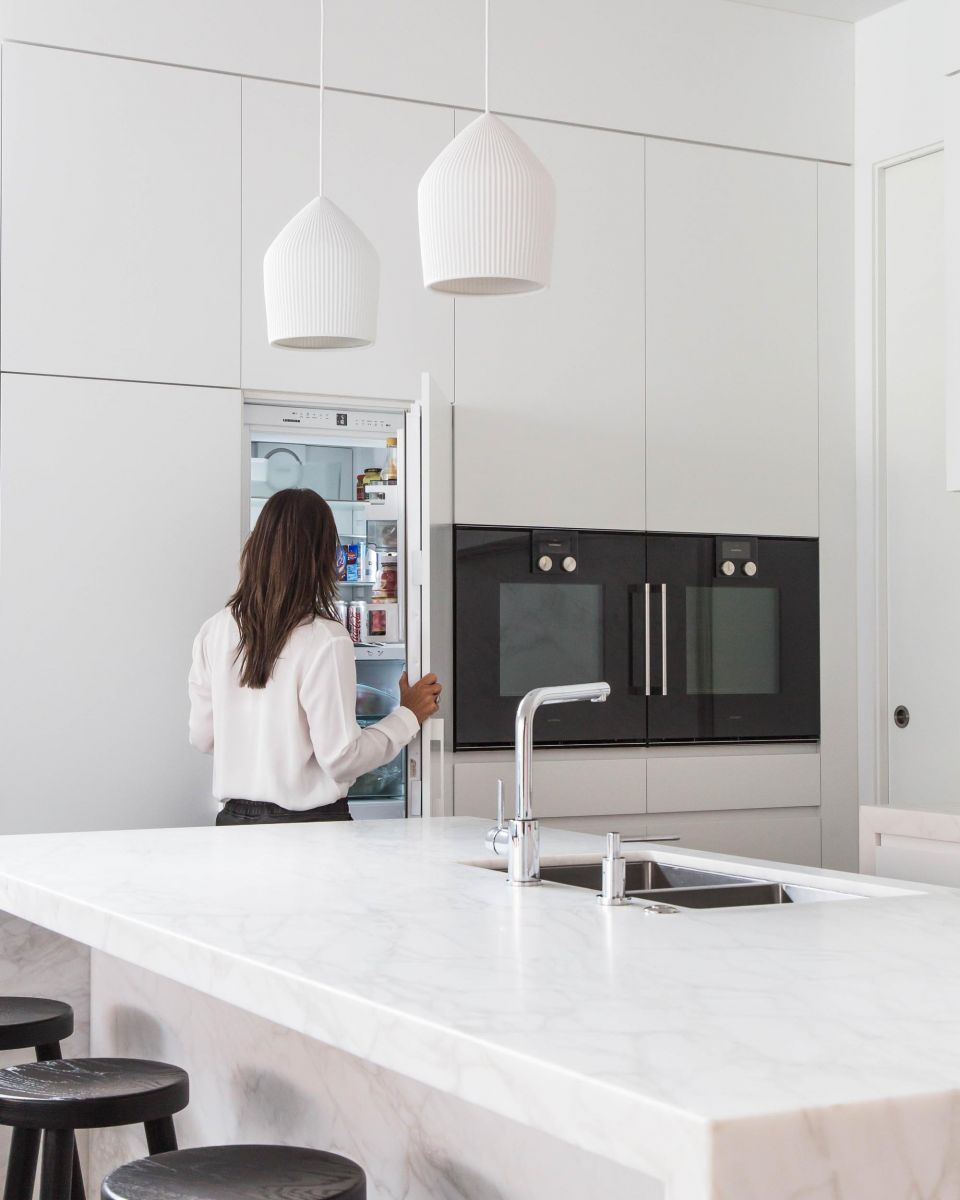
Image by: Suzi Appel
Avoiding pitfalls: Common mistakes in kitchen redesigns
While following a Pinterest-board-style image to a T might be tempting, Bec advises against it.
‘I’ve seen many homeowners get swept up with dreamy images, only to realise later that it doesn’t suit their lifestyle,’ she says.
‘Understanding your products and habits is key. Ask yourself questions like: How many items do I need in my kitchen? Do I cook often? How big are my pots and pans? How do I want to organise my appliances? Your answers will help determine drawer depth and layout preferences.’
Because making decisions solely based on aesthetics can lead to costly – or simply annoying – mistakes.
‘There’s nothing worse than investing in a kitchen renovation, only to have no space in your drawers for your favourite mugs or dinner plates!’ Bec laughs.
‘But by prioritising practicality alongside aesthetics, you can ensure a successful kitchen redesign that meets your needs for years to come.’
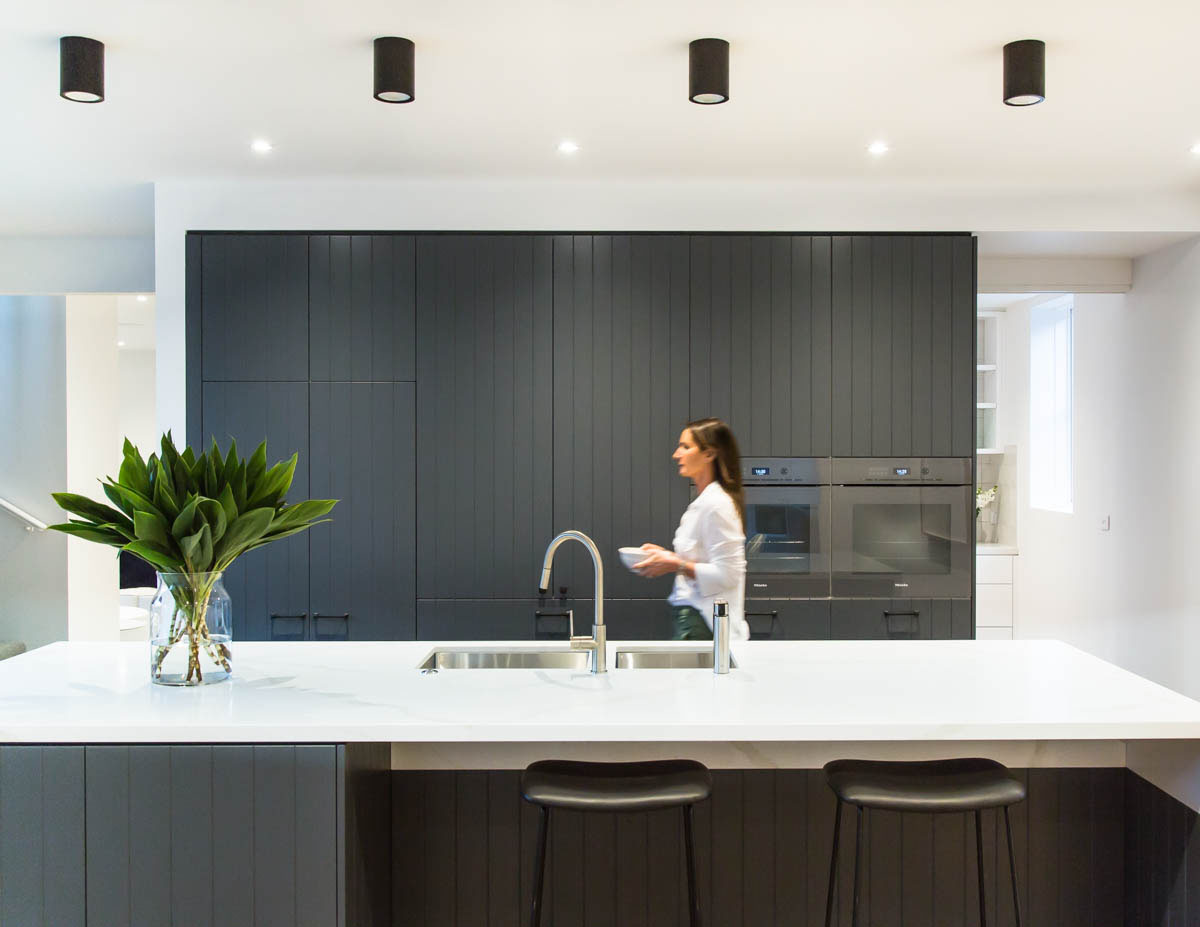
Image by: Suzi Appel
.jpg)